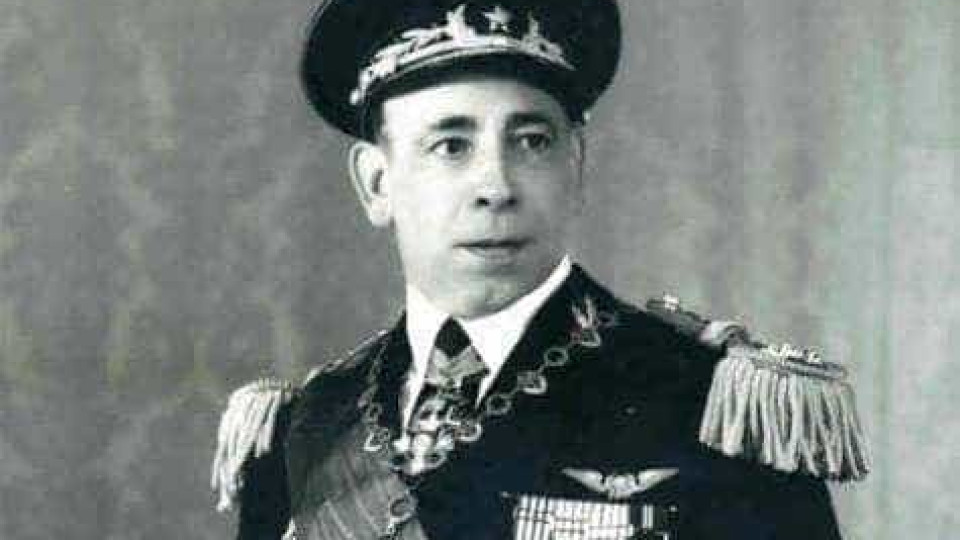"General without fear" Humberto Delgado remembered in the toponymy
The resistance of general Humberto Delgado in the Estado Novo is remembered in 448 arteries in the country, among at least 721 toponyms of figures of the old regime, 50 years after the end of the dictatorship in Portugal.

© Facebook/Humberto Delgado - General Sem Medo

País 25 de Abril
According to the CTT database -- Correios de Portugal provided to the Lusa agency, hundreds of toponyms of protagonists of the Estado Novo remain in the public space, among roads, avenues, streets, lanes, alleys, paths, boulevards, squares, esplanades, stairs, sidewalks, alleys, squares, small squares, bridges and neighborhoods.
General Humberto Delgado, who challenged the Salazarist regime in the 1958 presidential elections, has 448 toponyms, with emphasis on Sintra, with 17 plaques in four avenues, nine streets, two small squares and two alleys, in different places or parishes, followed by Loures, with 16, of which 12 streets, two esplanades and a square.
The "general without fear", as he became known, defeated in the polls, in a fraudulent electoral process, before being assassinated by the PIDE (International and State Defense Police), is also distinguished in Seixal (Setúbal), with an avenue, 10 streets and a small square, and in Almada, with two avenues, four streets, a sidewalk, a square, a small square and an alley, and in Vila Franca de Xira with eight streets and a small square.
Humberto Delgado was born in a village in Torres Novas (Santarém), a municipality with four streets, one in the parish of Brogueira, and four esplanades with his name, including the "memorial house" where he was born, in Boquilobo, and eight other toponyms in Alenquer (Lisbon) and Guimarães, seven in Alcácer do Sal, Grândola and Moita (Setúbal), Mafra and Odivelas (Lisbon), Santo Tirso and Torres Vedras, and six in Évora, Montijo and Santiago do Cacém (Setúbal), Penafiel (Porto) and Vila Nova de Famalicão (Braga).
Arraiolos (Évora), Beja, Cascais, Oeiras, Palmela (Setúbal), Cartaxo and Santarém have five arteries with the general's name, but many other municipalities, from north to south and islands, vary between one and four toponyms, from the street and alley in Viana do Castelo, to the two streets and square in Serpa or the street and neighborhood in Cuba (Beja), the avenue, two streets and esplanade in Silves (Faro) or two roads in Horta, on the Azorean island of Faial.
In the list with 72 toponymic references, in the districts of Aveiro, Beja, Bragança, Castelo Branco, Coimbra, Évora, Faro, Leiria, Lisbon, Porto, Santarém, Setúbal, Viana do Castelo and Vila Real, Duarte Pacheco appears, who was Minister of Public Works and responsible for projects such as the Lisbon airport and the Salazar Bridge, renamed Ponte 25 de Abril, between Lisbon and Almada.
The engineer Duarte Pacheco was born in Loulé, where he has an avenue, two streets and an alley, but he is also distinguished in Leiria (three streets) and Santarém (street, esplanade and alley), as well as in many other municipalities in recognition of his work in the country.
The Portuguese consul in France Aristides de Sousa Mendes, who granted visas to Jews, who were fleeing the Nazi German army, in World War II, against Salazar's wishes, has 63 toponyms in the districts of Aveiro, Beja, Braga, Bragança. Coimbra, Faro, Guarda, Leiria, Lisbon, Porto, Santarém, Setúbal, Viana do Castelo, Vila Real, Viseu.
Sousa Mendes was born in Cabanas de Viriato, a parish in the municipality of Carregal do Sal (Viseu), where he only had an avenue with his name, but the diplomat stands out in Loures, with four streets and a small square, in Cascais, with an avenue and three streets, in Odivelas, with two avenues and two streets, and two toponyms in Fafe, Faro, Lousã, Guimarães, Santarém and Sintra, and an artery in many other municipalities.
Surviving the initiative to erase the ideology and memories of 48 years of dictatorship, at least 17 streets are named after António de Oliveira Salazar, who governed as Minister of Finance and later as President of the Council of Ministers (Prime Minister).
In Vila Nova de Famalicão, district of Braga, there is the only street named after Manuel Dias Gonçalves Cerejeira, a cardinal of the Catholic Church who supported the Estado Novo, in the municipality where he was born in 1888, and who was also Patriarch of Lisbon.
In addition to toponymy, figures from the Estado Novo are also present in the statuary or in the Duarte Pacheco bridge and viaduct, in Penafiel and Lisbon, respectively, but also at Humberto Delgado Airport, in the capital.
Read Also: 25 de Abril. The odds of the coup and why the 25th (Portuguese version)


Descarregue a nossa App gratuita.
Oitavo ano consecutivo Escolha do Consumidor para Imprensa Online e eleito o produto do ano 2024.
* Estudo da e Netsonda, nov. e dez. 2023 produtodoano- pt.com






